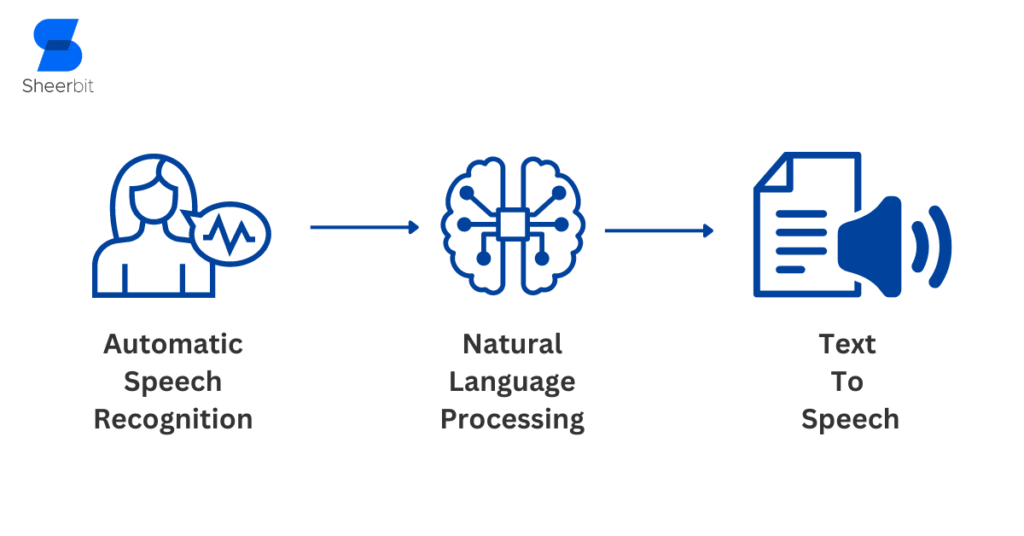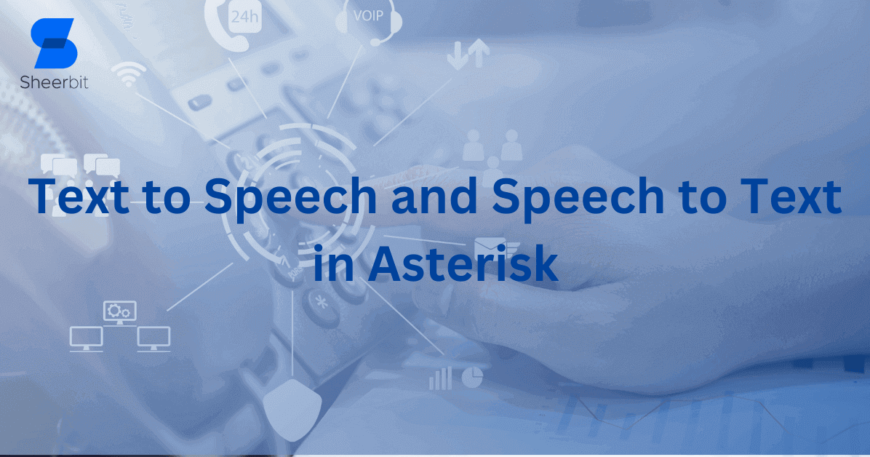The fusion of numerous technologies in contemporary communication systems has resulted in the creation of adaptable tools that improve our interactions with machines and computers. Incorporating Text to Speech (TTS) and Speech to Text (STT) capabilities into the Asterisk telephony framework is one such technology that has grown significantly. Building phone apps and services may start with a solid foundation, thanks to the open-source communication platform Asterisk. Adding TTS and STT features to Asterisk creates many opportunities for developing interactive, usable, and dynamic apps. The relevance of Text-to-speech and Speech Text in the Asterisk architecture and their function in reshaping communication channels are examined in this blog article.

Text to Speech (TTS) in Asterisk
A technique called text-to-voice transforms written text into audible speech. TTS has been used in several applications, including contact center automation and virtual assistants. The incorporation of TTS capabilities into Asterisk has the following benefits:
Dynamic Call Flows:
TTS enables Asterisk apps to give callers dynamic, real-time information. For instance, a weather information line may use TTS to create updated weather predictions, guaranteeing that callers always get the most recent data without manual input.
Accessibility:
TTS makes programs more accessible by producing text as spoken output. This is crucial for users who are blind or visually impaired since it makes it possible for them to engage with the system properly.
Multilingual Support:
Asterisk TTS is useful for applications that target various audiences since it supports multiple languages and accents. It makes sure that the content is correctly communicated in the chosen language.
Interactive Voice Response (IVR):
IVR systems may use TTS to dynamically produce menu selections and prompts, giving callers a more enjoyable and user-friendly experience.
Reduced Costs:
Pre-recorded speech prompts may be replaced by TTS, which eliminates the need for voice actors and recording sessions and, ultimately, lowers expenses.
Speech to Text (STT) in Asterisk
Using speech-to-text technology, audible words are transformed into written text. STT gives telecommunication apps a new level when coupled with Asterisk:
Voicemail Transcription:
To allow users to view their voicemails as text, Asterisk may utilize STT to transcribe voicemail messages. This feature can be beneficial in busy surroundings or other circumstances when listening is not an option.
Call Analytics:
Call conversations may be recorded and analyzed using STT. This has applications in transcribing and analyzing spoken conversations for insights into contact center quality assurance and compliance monitoring.
Real-time Captioning:
STT can offer captioning for the hard of hearing or deaf during phone conversations by transcribing live calls in real-time.
Voice Search:
Voice search capabilities are a feature that some Asterisk applications with STT can provide. This feature enables users to interface with databases or systems using their voice, which may be very helpful for hands-free operations.
Language Learning:
STT may help language learners improve their public speaking skills by giving them feedback on their speech and pronunciation in educational applications.
Transforming Communication Channels
Technology-wise, Asterisk’s use of TTS and STT alters communication channels in several ways, including:
Enhanced User Experience:
Through TTS and STT, an experience that is more intuitive and user-friendly is made possible. These technologies simplify interactions, whether a client is dealing with an IVR or leaving a voicemail.
Inclusivity:
Communication is more inclusive, thanks to TTS and STT. Now, those with impairments and those who speak a different language may interact with communication technologies equally.
Efficiency:
Automating information delivery using TTS requires less human interaction, improving procedures, and freeing up personnel for jobs that demand a personal touch.
Data-driven Insights:
Using STT for call analytics offers valuable insights into client interactions, assisting businesses in honing their communication tactics and enhancing customer support.
Future Possibilities:
Combining TTS and STT with Asterisk opens the possibility of even more cutting-edge applications as these technologies progress. The Asterisk ecosystem includes personalized AI assistants, interactive storytelling, and virtual language coaches.
Conclusion
The Asterisk framework’s use of Text-to-speech and Speech to Text technologies shows how rapidly communication systems are developing. TTS and STT fundamentally alter communication channels by enabling dynamic call flows, enhancing accessibility, facilitating multilingual conversations, and offering data-driven insights. Asterisk’s use of these technologies demonstrates its dedication to providing cutting-edge solutions for contemporary communication difficulties, whether through developing more interesting IVRs, improving accessibility for all users, or offering real-time transcription. Combining Asterisk with TTS and STT capabilities opens the door for a more connected and inclusive future as technology advances.





